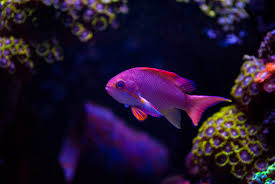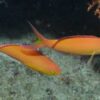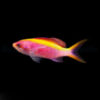Dragons in Paintings of Nature and Wildlife: Symbolism and Representation
Dragons, mythical creatures often associated with power, wisdom, and transformation, have captivated the human imagination for centuries. In various cultural traditions, dragons are revered as protectors and symbols of natural forces, transcending the boundaries of reality and entering the realm of art, where they are often depicted alongside the beauty of nature and the raw vitality of wildlife. In paintings, dragons are portrayed not just as fearsome beasts, but also as creatures of immense beauty, intimately connected with the natural world and its myriad wonders.
This article delves into the portrayal of dragons in artworks that depict nature and wildlife. We will explore the ways in which dragons are represented in these paintings, their symbolic significance, and the role they play in conveying the themes of harmony between humanity, nature, and the mythical forces that govern the universe. The connection between dragons and the natural world is both deep and multifaceted, with dragons often symbolizing the balance of life, the power of transformation, and the intrinsic connection between humans and the environment.
The Dragon as a Symbol of Natural Power
In many cultures, dragons are deeply intertwined with the forces of nature. In Chinese, Japanese, and other East Asian traditions, dragons are often linked to water, wind, and the elements. These majestic creatures are seen as rulers of the natural world, controlling rain, rivers, and the sky, all of which are essential for sustaining life on Earth. Dragons, therefore, are not just powerful symbols; they are seen as integral parts of the ecosystem, embodying the forces that govern nature and wildlife.
In Chinese art, for instance, the dragon is often depicted as a serpent-like creature coiling through clouds, water, and mountains. Its presence in nature-based paintings signifies its control over the elements and its ability to shape the world around it. The dragon’s association with water is particularly prominent, as water is essential for life and fertility. In these works of art, dragons are often seen rising from the depths of oceans or coiling through rivers, symbolizing the abundance of water and the cycles of nature.
Similarly, in Japanese mythology, dragons are depicted as creatures that command the elements and are connected to both terrestrial and celestial realms. They are often seen in harmony with nature, inhabiting rivers, lakes, and the sky. Paintings that feature dragons alongside wildlife—such as birds, flowers, and trees—emphasize the deep connection between these creatures and the natural environment. The dragon’s role as a guardian of nature is evident in its portrayal as both a protector and a force of creation, ensuring that life continues to flourish in balance with the world’s natural rhythms.
Dragons and Wildlife in Traditional Paintings
Wildlife has long been a favorite subject of artists who seek to capture the beauty and dynamism of nature. In many traditional paintings, dragons are not isolated figures, but are integrated into landscapes that feature animals, plants, and other elements of the natural world. The dragon, in these works, becomes a symbol of the vital forces that animate all living things, from the smallest insect to the largest tree.
In Chinese paintings, wildlife is often depicted in intricate detail, with animals such as tigers, lions, birds, and horses featured prominently alongside the dragon. These animals are frequently shown in dynamic poses, symbolizing strength, courage, and vitality. The dragon, in turn, is often shown as a companion to these creatures, coexisting in harmony with them in the natural world. The dragon’s presence in such paintings is meant to convey the idea that all living beings—whether they are dragons, animals, or humans—are interconnected, each playing a role in the grand cycle of life.
In Japanese art, the dragon’s connection to wildlife is similarly emphasized. Dragons are often depicted alongside animals such as cranes, koi fish, and tigers, which are all symbols of longevity, strength, and resilience. The dragon, as a creature of transformation, is seen as a mediator between the earthly realm and the celestial realm. It is often portrayed as interacting with wildlife in ways that highlight its role as both a protector and a force of change. In these paintings, the dragon is not only a symbol of power, but also of the delicate balance between the forces of nature and the creatures that inhabit it.
The Symbolism of Dragons in Nature Paintings
The portrayal of dragons in nature paintings is rich in symbolism, with the creature serving as a multifaceted emblem of the natural world’s mysteries and wonders. Dragons are often seen as symbols of fertility, vitality, and regeneration, all of which are essential aspects of life in the natural world. In many cultures, the dragon is associated with the cycles of life, death, and rebirth, reflecting the ever-changing nature of existence and the interconnectedness of all things.
In Chinese mythology, the dragon is frequently linked to the cycle of seasons, particularly the arrival of spring and summer. These seasons are times of renewal and growth, and the dragon’s association with them reflects its role in fostering life and abundance. In nature-based paintings, the dragon is often shown emerging from the clouds or rising from the earth, symbolizing the arrival of new life and the promise of growth and prosperity. The dragon’s connection to water, which nourishes the earth and sustains life, further emphasizes its role as a symbol of fertility and renewal.
In Japanese art, the dragon’s symbolic significance extends beyond fertility to encompass themes of strength and resilience. Dragons are often depicted as creatures that embody the power to overcome obstacles and to triumph over adversity. This symbolism is especially relevant in nature paintings that feature animals known for their strength and endurance, such as tigers and bears. The dragon, as a creature that represents the forces of transformation and change, is seen as a guide to navigating the challenges of life and the natural world.
The Dragon as a Guardian of Nature
In many cultures, the dragon is regarded as a guardian of nature, tasked with protecting the balance of the natural world and ensuring that life continues to thrive. This protective role is often emphasized in paintings that depict the dragon in close relationship with the environment and wildlife. The dragon, in these works, is not a mere beast, but a celestial being entrusted with the care of the earth and its creatures.
In Chinese art, dragons are often portrayed as guardians of sacred mountains, rivers, and forests. These natural landmarks are seen as powerful symbols of the earth’s vitality, and the dragon’s presence is a sign of protection and balance. The dragon’s role as a guardian is further highlighted by its connection to the emperor, who was believed to be the earthly representative of the dragon. In this sense, the dragon was seen not only as a protector of nature, but also as a symbol of authority and wisdom.
In Japanese art, the dragon’s role as a guardian is similarly emphasized. Dragons are often depicted in protective poses, coiling around sacred trees, temples, or other important landmarks. The dragon’s ability to transform and shape the natural world is seen as a sign of its power to protect the environment and ensure that the forces of nature remain in harmony. The dragon’s relationship with wildlife is also a reflection of its role as a protector, as it ensures that the creatures of the earth are safe and that the natural order is maintained.
The Aesthetic Appeal of Dragons in Nature Paintings
One of the most striking aspects of dragon-themed nature paintings is their aesthetic appeal. Dragons, with their serpentine bodies, intricate scales, and flowing tails, are often portrayed in stunningly beautiful and dynamic poses that evoke both grace and power. These creatures are depicted in a way that captures the majesty and mystery of the natural world, blending the fantastical with the real.
In Chinese art, dragons are often painted in bold, sweeping lines, with intricate patterns and vibrant colors that evoke a sense of movement and energy. The dragon’s body is frequently shown winding through the clouds or coiling around trees, mountains, or rivers, creating a sense of fluidity and harmony. These paintings often convey a sense of awe and reverence for the natural world, emphasizing the beauty and power of the elements that dragons are believed to control.
In Japanese art, the dragon’s form is often more stylized, with a focus on its graceful, serpentine shape and delicate features. The dragon’s interaction with wildlife, such as koi fish or cranes, is portrayed in a way that highlights the beauty of the natural world and the balance between creatures. These paintings often evoke a sense of peace and tranquility, emphasizing the importance of maintaining harmony between humans, animals, and the environment.
Conclusion: The Timeless Connection Between Dragons and Nature
Dragons have long been symbols of power, wisdom, and transformation, and their portrayal in nature and wildlife paintings reflects their deep connection to the natural world. These mythical creatures are often depicted as guardians of nature, protectors of the balance between life and death, and symbols of fertility, vitality, and renewal. Through their association with animals, plants, and the elements, dragons embody the complex forces that shape the world around us and remind us of the interconnectedness of all living things.
Whether in Chinese or Japanese art, the dragon’s role in nature paintings underscores its importance as both a symbol of strength and a reflection of the natural cycles that govern life. These paintings invite us to contemplate the beauty and power of the natural world, as well as the delicate balance that sustains it. The dragon, as both a mythical and natural force, continues to inspire awe and wonder, serving as a reminder of the timeless relationship between humanity and the environment.


